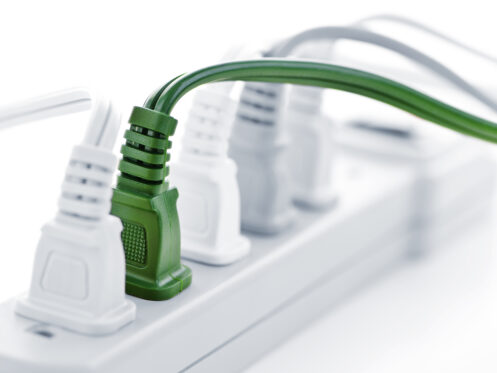In the ever-evolving landscape of electrical systems, understanding the different types of electrical outlets is crucial for both homeowners and business owners alike. Electrical outlets are not just receptacles; they are the gateways through which power flows into our lives. From charging our smartphones to powering up heavy appliances, these unassuming devices play a significant role.
1. Type A Outlets: The Standard in North America
A Type A electrical outlet, also known as a Type A socket or plug, is a standard electrical outlet configuration predominantly used in North America, Central America, and parts of South America and Asia. It is one of the four main types of electrical outlets commonly found around the world, each designed to accommodate the specific voltage and plug shape standards of various regions.
Distinct Characteristics
Type A outlets are characterized by their two parallel flat prongs, one slightly wider than the other. The wider prong is the neutral or grounded prong, and the narrower one is the hot or live prong. These outlets are designed to provide a standard voltage of 120 volts and typically offer a frequency of 60 hertz. This voltage is suitable for powering a wide range of devices with relatively lower power requirements.
Versatile Applications
Devices that can be plugged into Type A outlets include lamps, chargers, small appliances like blenders and toasters, audio equipment, and other household gadgets. However, due to their limited power capacity, heavy-duty appliances like air conditioners, washing machines, and larger kitchen appliances often require a different type of outlet.
Safety Considerations and Grounding
Type A outlets do not have an integrated grounding pin like some other outlet types. Grounding is an important safety feature that helps to protect against electrical faults and shocks. To provide grounding, some Type A outlets are equipped with a ground-fault circuit interrupter (GFCI), a safety device that quickly shuts off power in case of a fault.
Global Variations and Compatibility
While Type A outlets are common in North America, they might not be prevalent in other parts of the world. If you’re traveling internationally or using devices from different regions, you may need plug adapters or voltage converters to ensure compatibility.
2. Type B Outlets: Enhanced Safety for Power Needs
A Type B electrical outlet, also known as a Type B socket or plug, is a specific configuration of electrical outlet commonly used in North America, Central America, and parts of South America.
Distinguishing Features
Type B outlets are recognized by their two flat parallel prongs, similar to the Type A outlets. However, what sets Type B outlets apart is the presence of an additional grounding pin located below the two prongs. This grounding pin serves as a safety feature, designed to reduce the risk of electric shock and provide a path for electrical current to safely dissipate in case of a fault.
Safety Through Grounding: A Critical Mechanism
The two flat prongs of a Type B outlet represent the live (hot) and neutral connections, while the grounding pin is connected to the ground wire of the electrical circuit. This grounding feature enhances safety by redirecting excess electrical current away from the user and into the ground, reducing the chances of electric shock.
Functionality and Application
Type B outlets provide a standard voltage of 120 volts, similar to Type A outlets, and they typically have a frequency of 60 hertz. These outlets are commonly used to power a wide range of devices, from small appliances like lamps, chargers, and audio equipment to larger household appliances like refrigerators, air conditioners, and washing machines.
3. Type C Outlets: The International Connection
A Type C electrical outlet, commonly referred to as a Type C socket or plug, is a specific configuration of electrical outlet that is prevalent in many parts of Europe, Asia, and other regions around the world.
Specific Features
Type C outlets are easily recognizable by their two round prongs, which are typically ungrounded. Unlike Type A and Type B outlets that are commonly used in North America, Type C outlets do not include a grounding pin. Instead, they are designed for devices that do not require grounding or have a separate ground connection.
Functionality Across Voltage and Devices
Type C outlets are typically found in countries with a standard voltage of 220 to 240 volts and a frequency of 50 hertz. These outlets cater to a wide range of devices, from smaller electronic gadgets like laptops, smartphones, and cameras to various household appliances that make our daily lives more convenient and efficient.
Safety Implications and Contextual Considerations
It’s important to note that while Type C outlets are commonly found in many parts of the world, the absence of a grounding pin can raise safety concerns in some contexts. As such, devices that require grounding for safety purposes may not be suitable for use with Type C outlets.
Ensuring Compatibility: Plug Adapters and Beyond
For travelers or individuals using devices from regions with different outlet standards, plug adapters may be necessary to ensure compatibility. These adapters allow you to plug your devices into Type C outlets while maintaining safety and functionality.
4. Type D Outlets: The Indian Configuration
A Type D electrical outlet, often referred to as a Type D socket or plug, is a distinct configuration of electrical outlet predominantly used in India and Nepal.
Evident Characteristics: The Triangular Design
Type D outlets are characterized by their three round pins arranged in a triangular configuration. These pins include two smaller pins on top and a larger pin below them. This outlet design is tailored to meet the specific power requirements of countries that utilize Type D outlets.
Empowering Heavy-Duty Demands: Voltage and Suitability
Type D outlets are typically used in regions with a standard voltage of 230 volts and a frequency of 50 hertz. These outlets are suitable for devices with higher power demands, making them ideal for heavy-duty appliances commonly found in households, such as air conditioners, refrigerators, and larger kitchen appliances.
Global Variations
While Type D outlets are standard in India and Nepal, they may not be commonly found in other parts of the world. If you have a multicultural setup or are engaged in trade with countries using Type D outlets, it’s important to be aware of their specific requirements.
Understanding the variations in outlet types, like Type D outlets, is crucial to ensuring the safety and functionality of your electrical systems. For travelers or individuals using devices from regions with different outlet standards, plug adapters may be necessary to ensure compatibility and safety.
Beyond Outlets and Wires
Mackey Services, your trusted electrical partner in Dickinson, brings more than just knowledge about outlets to the table. Our experts have extensive experience in residential and commercial electrical services. From wiring renovations and electrical panel upgrades to energy-efficient lighting solutions and safety inspections, we have your every electrical need covered. While this guide deepened your understanding of outlet variations, our expertise extends far beyond, ensuring that your entire electrical ecosystem functions seamlessly and securely.
Empower Your Space: Contact Us Today!
As we conclude our journey through the diverse realm of electrical outlets, remember that these unassuming devices play a pivotal role in keeping our modern lives charged and operational. Whether you’re in a Type A, B, C, or D region, Mackey Services is your trusted partner in navigating the intricacies of electrical systems. We invite you to explore our website to learn more about our services and how we can empower your space with efficient, safe, and cutting-edge electrical solutions. Contact us today to embark on a journey toward electrical excellence that goes well beyond outlets and wires.





